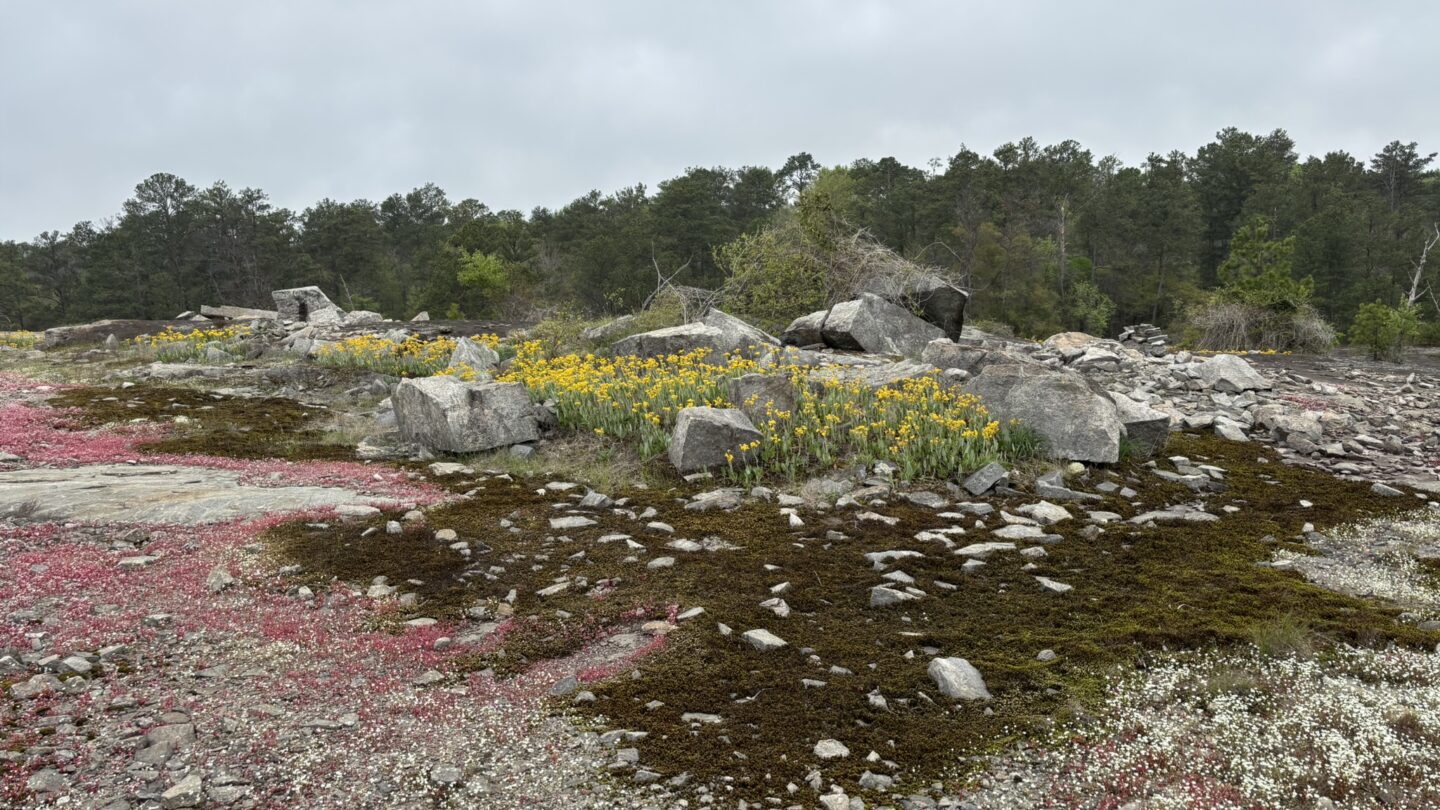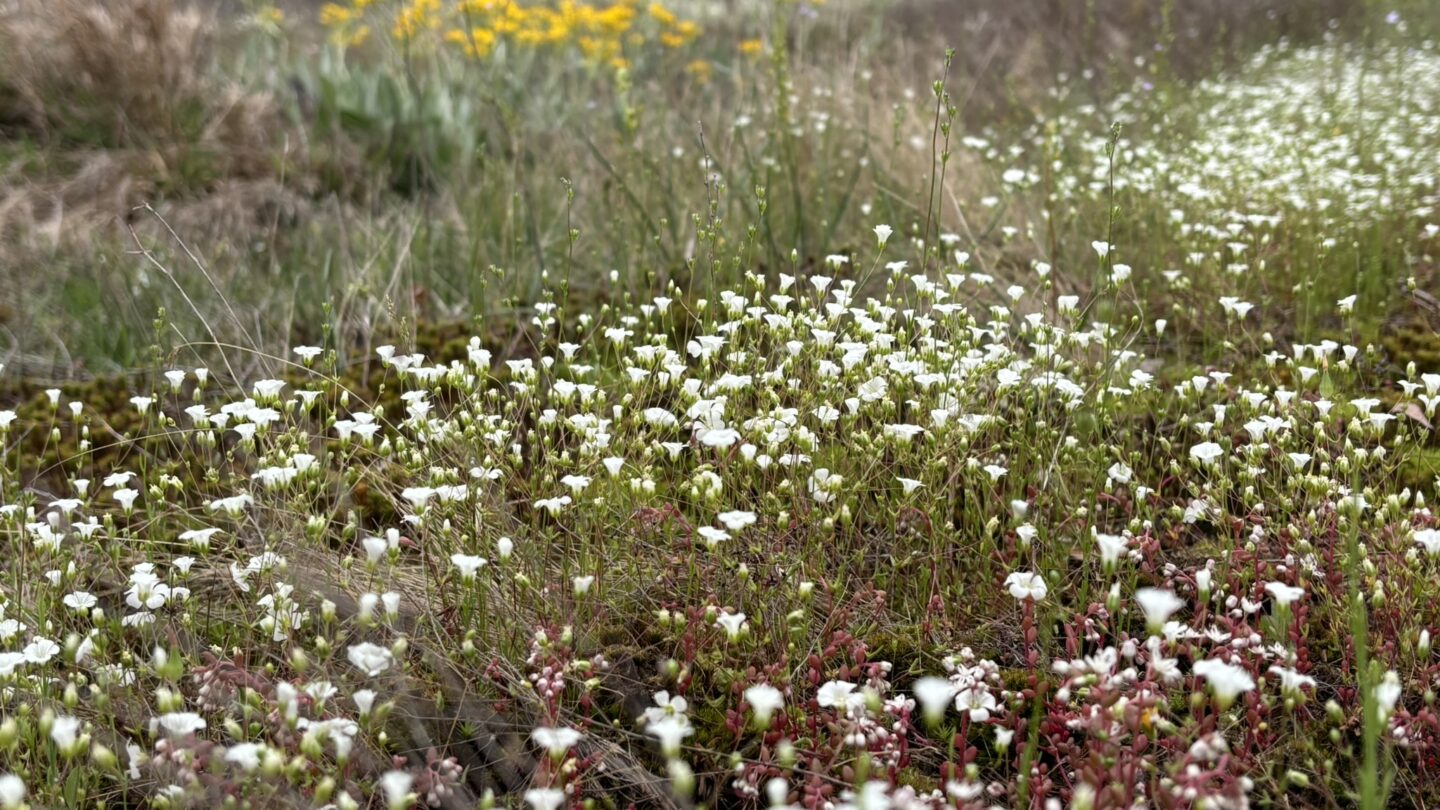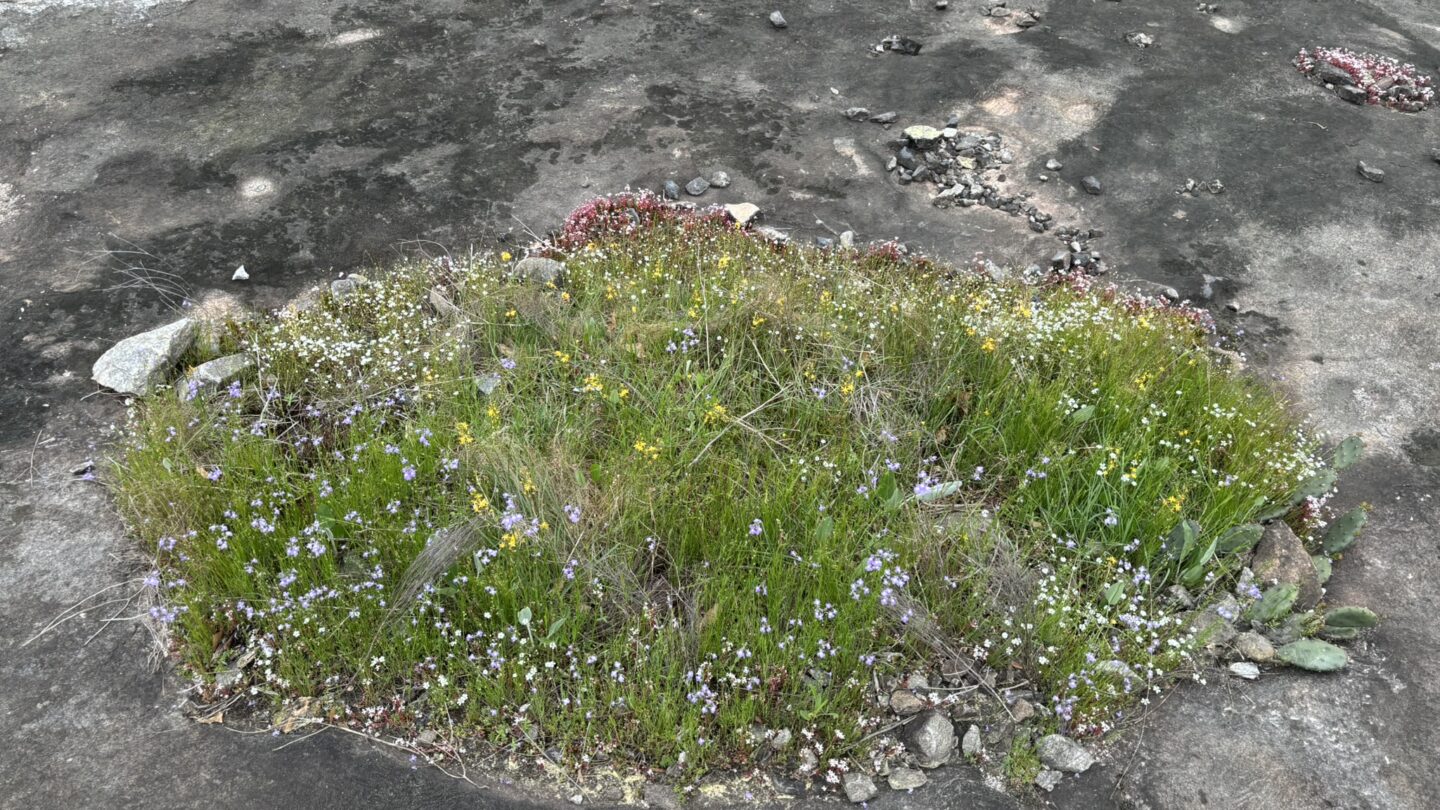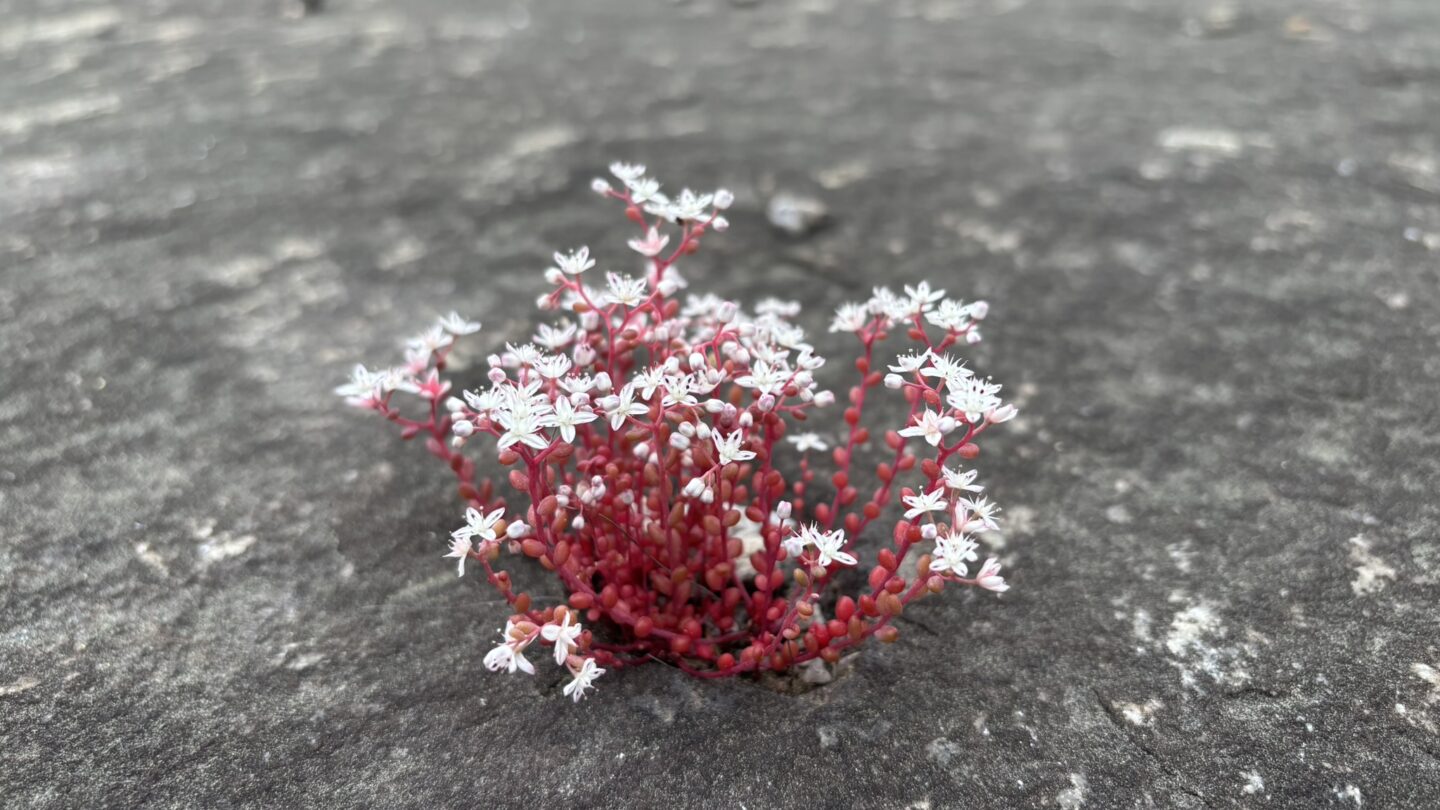The Goizueta Gardens team loves to visit other botanical gardens but is always most excited to observe flora and fauna in their local habitats. Over the past year the team has visited some incredibly unique ecological communities in our region including a calcareous prairie, granite outcrop, restored ranchland, and rocky river shoal.
This spring the team explored a remnant of the Coosa Valley Prairies, a unique land formation in Northwest Georgia. We had Malcolm Hodges as a guide for the trip, whose curiosity and passion for plants, birds, and lichens is contagious. He led the group through patches of both wet and dry prairies on a Nature Conservancy held conservation easement owned by a logging company. The calcareous bedrock, which contains lime, influences the plant species found here. These plant communities are rare in Georgia but have similarities to prairies found further West. Each June in the dry prairie, large fields of prairie coneflowers and blazing stars bloom en masse. We saw Asclepias viridiflora (green milkweed), many native grasses, and swaths of wild quinine and phlox. In the wet prairie, hundreds of Silphium terebinthinaceum (prairie dock) surrounded us. As planting designers and horticulturists, we pondered how we might convey the immersive feeling of this landscape into a smaller garden space.
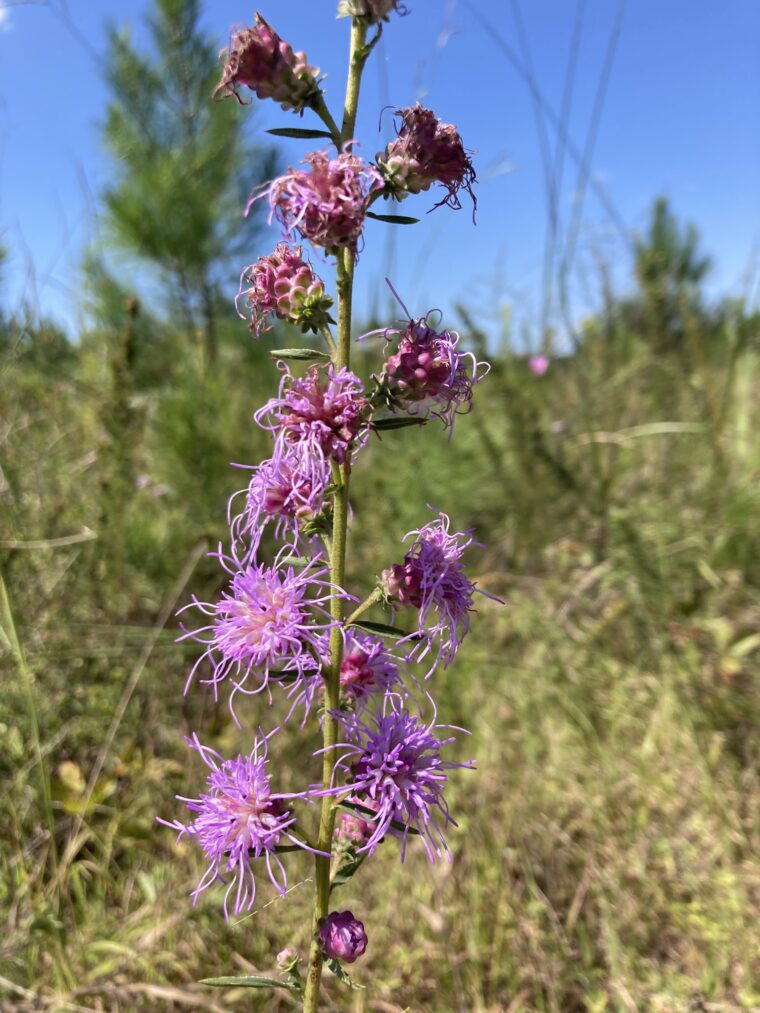
Liatris aspera (rough blazing star) growing in the dry meadow
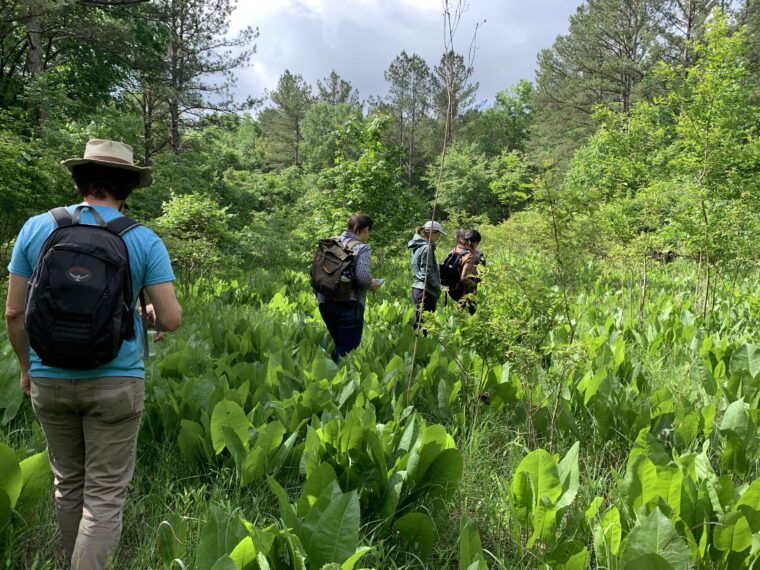
Silphium terebinthinaceum (prairie dock) in the wet meadow
The sites we go to botanize are often thought of as natural communities, and to some extent they are, but they are equally influenced by human impacts—often wedged between different land uses that change over time. For example, the compaction caused by heavy logging trucks in the dry prairie exaggerated the barren condition that causes Liatris and Echinacea to thrive. In addition, there is the influence of restoration practices such as the prescribed fires that the Nature Conservancy uses to encourage conditions that benefit these rare prairie species.
At Arabia Mountain—another site we visited this year in nearby Stonecrest, Georgia—endemic species have colonized formerly quarried areas of the site.
Arabia Mountain is otherworldly! The sense of scale is surreal, from the wide stretches of lichen and bio-film-encrusted rock covering the mountaintop, to the pocket gardens nestled within the crevices of the rock. Water collects where granite has eroded, leading to distinct plant life that has adapted to harsh conditions and changes dramatically throughout the year. Together, the plants create pools of color across the exposed landscape. The group met with DeKalb County Naturalists Shaundon Moore and Robby Astrove who shared much knowledge and discussed the difficulty of caring for rare plant communities while making them accessible to the public.

There are various ways to think about caring for these rare ecological communities, and we need a diverse approach to encourage their flourishing, just as we need different gardening styles. In May, our team was able to visit a large area of private land southwest of Atlanta, where the owners are using prescribed burns to maintain a former cattle ranch that has now been planted with longleaf pines and native grasses (pictured above). We learned about the challenges of keeping a grassland from developing into a woodland, and the abundance of aggressive sweetgum trees that seed in from surrounding areas.
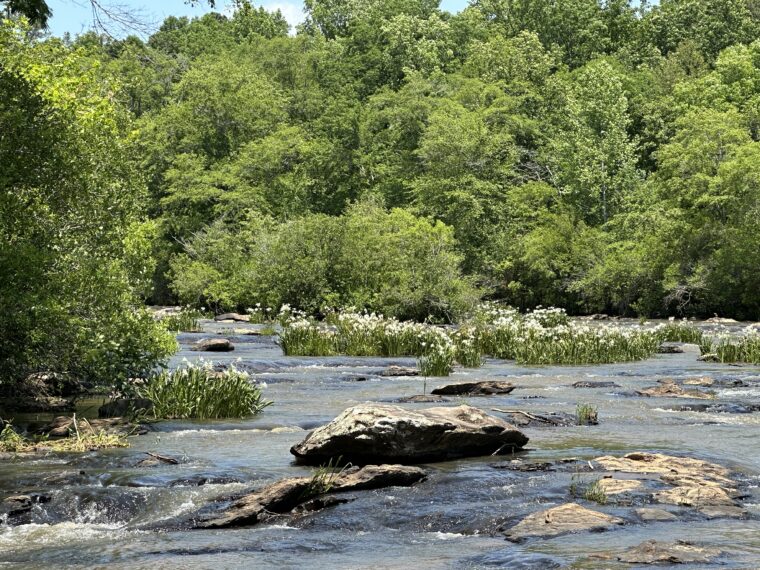
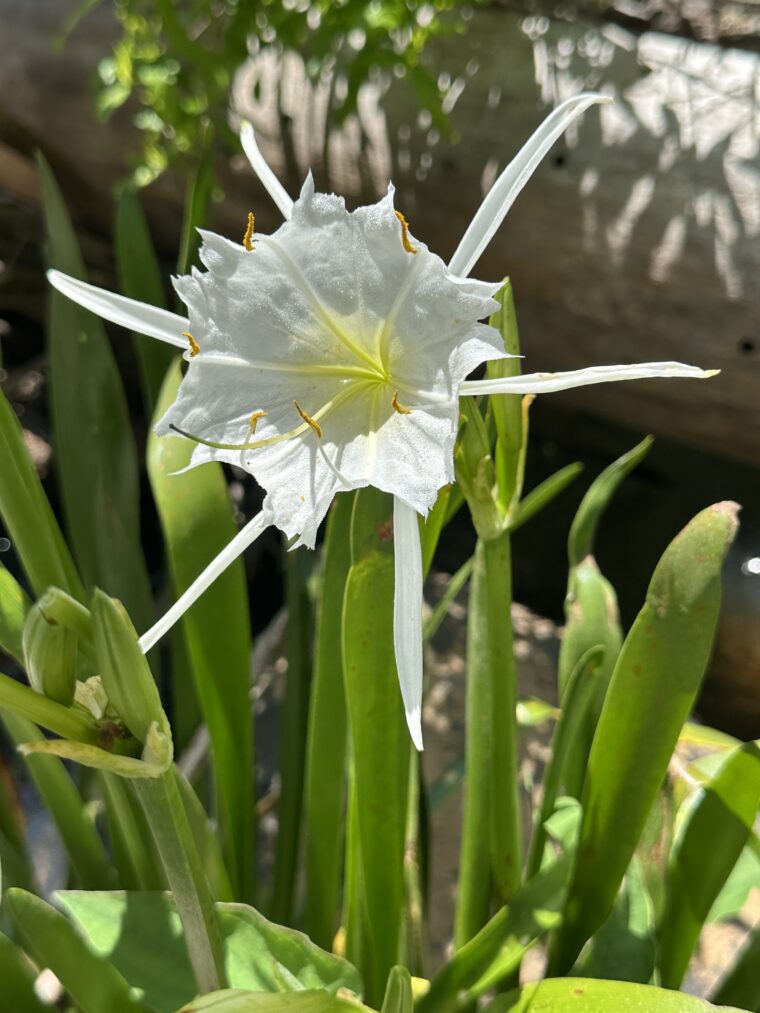
While in the area, we stopped to see a thriving population of Hymenocallis coronaria (shoal lily) pictured above, growing in Flat Shoals Creek—a nearby tributary of the Chattahoochee River. Shoal lilies live in shallow moving water, where their bulbs can take hold among rocky crevices in the creek bottom. It was mesmerizing to see them blooming in huge drifts across the creek while listening to the water babble over the exposed shoals. This lily is found only in Georgia, Alabama, and South Carolina. Its numbers have decreased significantly due to the construction of dams that alter waterway ecology. You can see a related species—Hymenocallis occidentalis—blooming in early summer in the Atlanta History Center’s Quarry Garden near the pond.
Field trips like this teach us about the agency of plants in the landscape. In the case of the shoal lily, the fast moving water of the creek is integral to its existence, while the plant also influences the creek’s ecology, with its roots that trap sediment and flowers that feed moths and other insects. It’s an expansive feeling to visit places where plants have adapted to weather, soils, animals, and our own impacts over long spans of time. And while many of these places are no doubt picturesque, it is not only their beauty that we as gardeners want to translate to the public, but also a sense of interconnectedness between plants, people, and the landscape.
If you’re interested in learning more about Georgia’s unique natural communities, I recommend picking up a copy of The Natural Communities of Georgia by Leslie Edwards, Jonathan Ambrose, and L. Katherine Kirkman. The companion website is also a great resource.
